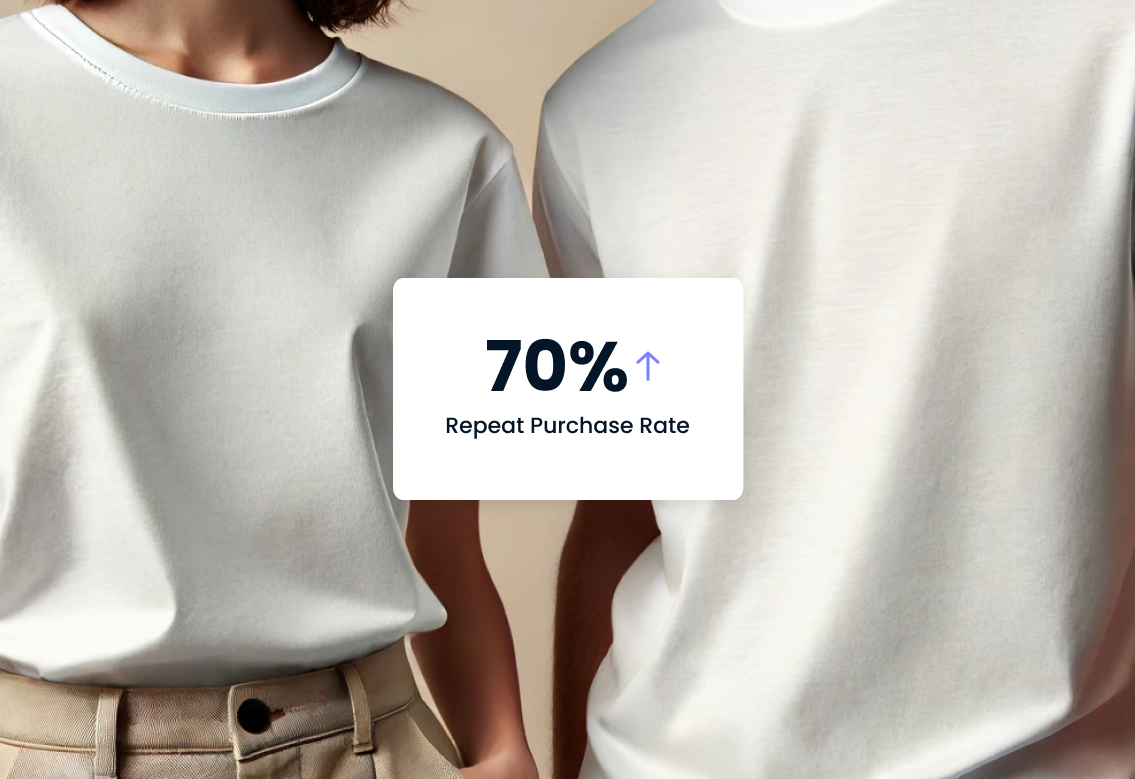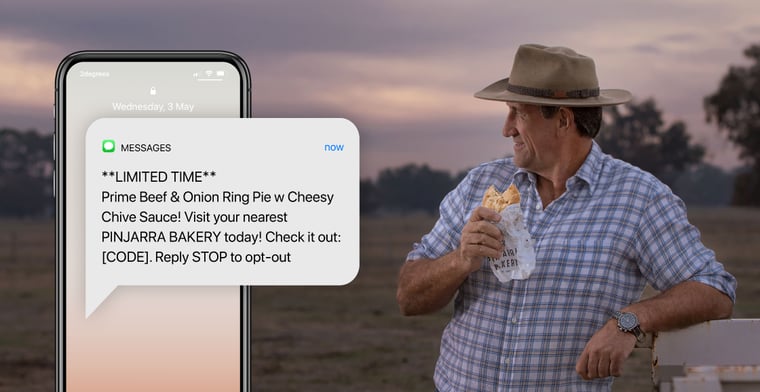
Loyalty is everything. In an increasingly competitive ecommerce market, brands are constantly vying for customer loyalty, for good reason: loyal customers are often the most profitable.
Plus, one of the best ways to tap into earned media (like word-of-mouth advertising, which most consumers trust above other advertising methods) is through—you guessed it—stronger customer loyalty.
Perhaps the most common way businesses try to foster brand loyalty is through a points program. However, if companies simply provide a cut-and-dry rewards program and call it a day (as opposed to a spend-based loyalty program or VIP program), it can make customers feel unvalued or not like VIPs.
In addition, if a program is solely about the points, it may fail to differentiate itself from other more competitive programs in the market.
Industry data shows that just 18% of rewards program members actively engage with all the programs they're a member of, showing how some rewards programs may offer too little value to the customer. Oof.
If you want to level up your customer loyalty initiatives beyond a points program, we've put together ten tips that can help.
Let's get started!
1. Set up email and SMS automations focused on bringing customers back
Email and SMS marketing are great ways to increase customer loyalty, as you can reach customers directly through their inboxes and mobile devices.
For best results, send triggered messages based on certain behaviors or actions your customers take. For example, you could send a message to a customer who hasn't made a purchase in a set amount of time or provide a voucher or discount as a way to say thank you after someone has made their first purchase.
Pinjarra Bakery is an excellent example of a business putting email and SMS marketing to good use. The company uses Marsello to power various campaigns that entice people to come in.
“We send out an SMS blast to our loyal customers first or our loyalty customers first giving them first access to come in and try the product before we release it to the public,” Daniel explains. “And of course, we conveniently time the blast to go out around lunchtime so people are probably getting hungry that time of the day and so far the results have been great.”

Another idea is to reward your customers' birthdays. You could track birthday purchases and the rate of redemption—all of which is valuable data that can be leveraged for more tailored marketing down the road.
Easy-to-implement options include sending a one-time special discount or a freebie via text or email. Just make sure to use unique codes to track the effectiveness of your automations.
2. Setting up targeted segments
Did you know that the average email open rate is just 21.5%? To make your emails more relevant, segment subscribers into different groups or categories based on criteria like location, age, or behavior. By doing so, you can better cater to each segment through the content and deals you offer, intrinsically creating more value for your customers.
Oh, and as a pro tip, consider using your subject lines to gauge interest in new products and themes you're considering offering.
3. Foster a strong community incidental to your brand
A brand community, when done right, is a way to rally together your most loyal customers or people who are the most interested in what you have to offer. Communities bring people together, which drives loyalty through shared experiences, meaningful connections, and a sense of belonging.
Marsello customer Pace Athletic is a master at community-building. The company has a run club that includes social jogs for all fitness levels. These run events end at local pubs where members can socialize, relax, and build friendships over a meal or drinks.
See if you can implement similar initiatives in your business. If you run a game shop, you could consider running a monthly board game night at your location. Brewery? Maybe a recurring beer tasting event or a pub quiz. Whether you want to keep it casual or more formal, brand communities are a great way to tap into brand loyalty and customer advocacy.
4. Offer exclusive access and early releases
Never underestimate the power of exclusivity. By fostering a sense of unique value or desirability—either by offering limited availability or exclusive access—brands can tap into the age-old desire of customers wanting to get something that's hard-to-get.
You can use this to your advantage by targeting your top spenders or frequent purchasers and creating a segmented campaign. Reward them with access to exclusive events, pre-sale access to limited edition items, or other similar events.
Take, for instance, Nordstrom, which gives members of The Nordy Club (the company's loyalty program) early access and extra discounts at sales events.
5. Start a referral program
To start things off, assign each consumer a unique referral code. Then, when they share your business with their friends, you can see if a purchase or subscription was made through the code and offer the customer (and maybe even the referred person) a reward. We recommend offering rewards that aren't point-based, like a free product or exclusive discount.
Also, make it easy to refer others: consider including a template with their unique code that customers can copy and paste. By reducing the friction around referrals, you'll make it easier for your brand to harness the power of earned media.
6. Provide valuable content and resources
Another great way to build customer loyalty is by creating content that's both informative and helpful for your customers: all with your own branding, of course.
Let's say you run a makeup or beauty company: you could do TikTok or Instagram user-generated reviews of your products, do tutorials on how to apply certain products, or make a Q&A video about frequently asked questions.
When you offer tips, guides, and tutorials on topics your audience cares about, you position your company as an expert and drive brand awareness by playing the long game.
7. Collect customer feedback
The best way to improve and understand customer satisfaction is through feedback, and what better moment to get feedback than right after a purchase? You can consider offering a small perk like free shipping on their next order as a small incentive, but what's crucial is to make it easy for your customers to provide feedback and to ensure they don't feel pressured into doing so.
Marsello's customer feedback capabilities allow shoppers to provide input with just a few clicks, so the experience is effortless.
Check out this example from Madame Fancy Pants, which uses Marsello's customer feedback capabilities to create a simple, visually appealing survey so customers can quickly rate their shopping experience.

Already have customer feedback? Be sure to act on it to improve your retention strategies. And don't forget to proactively inform your customers about any changes and updates you've made so they feel heard and seen.
8. Create a customer-centric culture
Improving customer loyalty isn't just about what you put out there—it's very much an inside job. The people in your business play a crucial role in fostering customer loyalty, so you need to instill the value of customer-centricity in your teams.
You can do this by providing ongoing training and development focused on customer service to keep folks at the top of their customer support game.
A great example of this in action comes from Zappos, which has built a reputation for exceptional customer service. The company provides extensive training for their employees, including a four-week program that emphasizes the importance of customer satisfaction. This commitment to training has helped Zappos achieve a high level of customer loyalty and a strong brand reputation.
Another example is Pace Athletic, who run a regular running club for their community. Why we love it? Pace Athletic live and breathe what they do - a running club is a natural extension of their brand, and a way to connect on a deeper level with their customers and followers.
The Pace team don't organize a running club to generate sales (at least not directly). But it does drive brand awareness and sales as a result. When their community build deeper relationships with the Pace team, they want to come in-store and ask for the staff's recommendations, suggestions and pointers. They want to support their local business, and the people behind it.
If you are passionate about what your business sells and what you represent, building community will come relatively easily. But it does take time and requires a commitment, so don't be disheartened if you don't see the revenue impact right away.
9. Invest in unique products and services
People stick with retailers and restaurants that consistently provide products and services they won't find elsewhere. So, strive to deliver unique and high-quality offerings to all of your guests.
If you're in retail, this can come in the form of trendy fashion or homeware products that enhance your customers' lives. If you're a restaurant, this could mean offering exclusive and innovative dishes, sourcing locally grown and fresh ingredients, or creating a unique dining experience with exceptional ambiance.
When you do this consistently, you build a loyal customer base and differentiate yourself from the competition.
10. Implement corporate social responsibility (CSR) initiatives
Doing good is good for business. Industry data shows that consumers are more likely to choose brands that promote CSR aspects like sustainability. According to Neilsen, "a whopping 81% of respondents said that it's extremely or very important that companies implement programs to improve the environment. When it comes to action, 73% said they would either definitely or probably change their consumption habits to reduce their impact on the environment."
To that end, it may make sense for your business to develop sustainability programs that focus on reducing environmental impact. This could include minimizing waste, using renewable energy, and sourcing sustainable materials.
Of course, CSR isn't just about sustainability. Social responsibility also encompasses societal issues like fair labor and community. So if these values align more with your brand, start exploring ways to support social causes. For instance, the brand TOMS partners with non-profit organizations that work on various societal issues, including access to mental health resources, community rehabilitation, and education.

Before you begin...
To ensure that your customer loyalty approaches are paying off, you must track key metrics regularly. Otherwise, you run the risk of investing significant time and money for no result. While you may not need to track all of the data points below, familiarize yourself with them and check in with your marketing team to determine which ones are the best for your organization.
- Net Promoter Score (NPS): This measures customer satisfaction and loyalty based on how likely customers would recommend a product/service to others on a scale of 1-10. Detractors are 0-6, while Promoters are 9-10. A score over 50 is generally good, while above 70 is great.
- Customer Retention Rate: The rate at which your customers stay with you over a specific period, which reflects the effectiveness of your loyalty-building efforts. Make sure you balance this with customer acquisition strategies.
- Customer Lifetime Value (CLV): This is an indication of the total revenue expected from a customer over their entire relationship with a brand. It's a great way to identify more valuable customers and assess the long-term value of customer loyalty programs.
- Repeat Purchase Rate: The proportion of customers who make repeat purchases, which indicates ongoing customer engagement and loyalty. Customers with a high RPR should be targeted when launching new products or services.
- Customer Satisfaction Score (CSAT): This provides immediate feedback on customer experience and loyalty; it's the average score given when you ask customers how happy/satisfied they were with an experience.
While this isn't an exhaustive list, tracking some (or all!) of the above metrics will put you well on your way to quantitatively understanding how your brand loyalty efforts are paying off.
Final words
We've covered a lot of ground looking at the top ways your business can foster customer loyalty without needing a points-based program.
While you don't need to implement all of these at the same time, we recommend trialing out at least a couple of these methods and seeing what sticks. Most importantly, this shouldn't be a "set it and forget it" approach. You need to stay attuned to the feedback received and stay in the know on industry best practices. This way, you'll be ahead of the curve and continually improve customer loyalty.
If you're looking to create an omnichannel loyalty program that offers real value, Marsello has you covered. From SMS and email marketing to loyalty and referral programs, Marsello can help you from start to finish.
Need help? Get advice from a loyalty expert and start driving repeat sales.
Read more: 7 Steps To Building A Profitable Loyalty & Rewards Program



